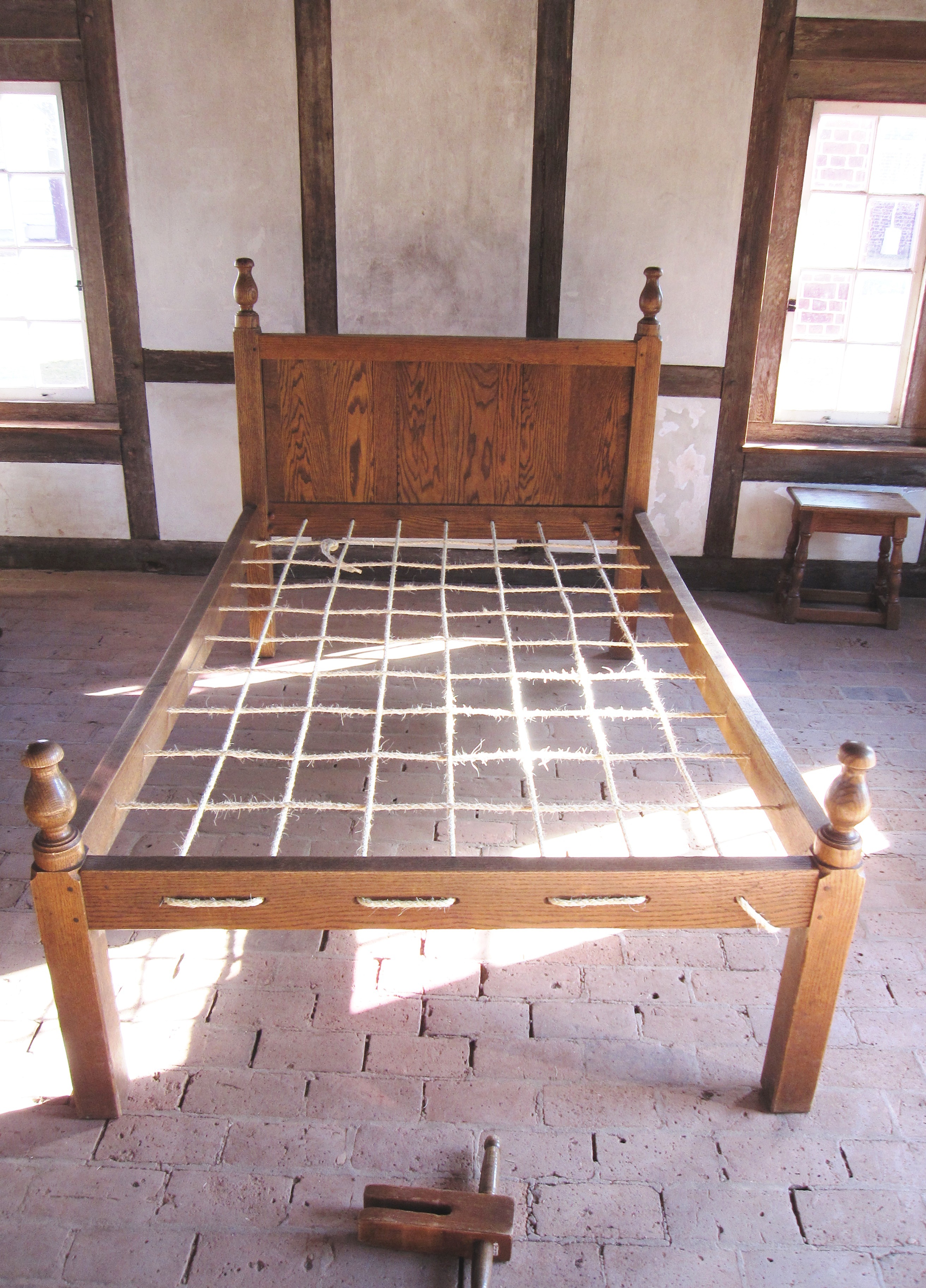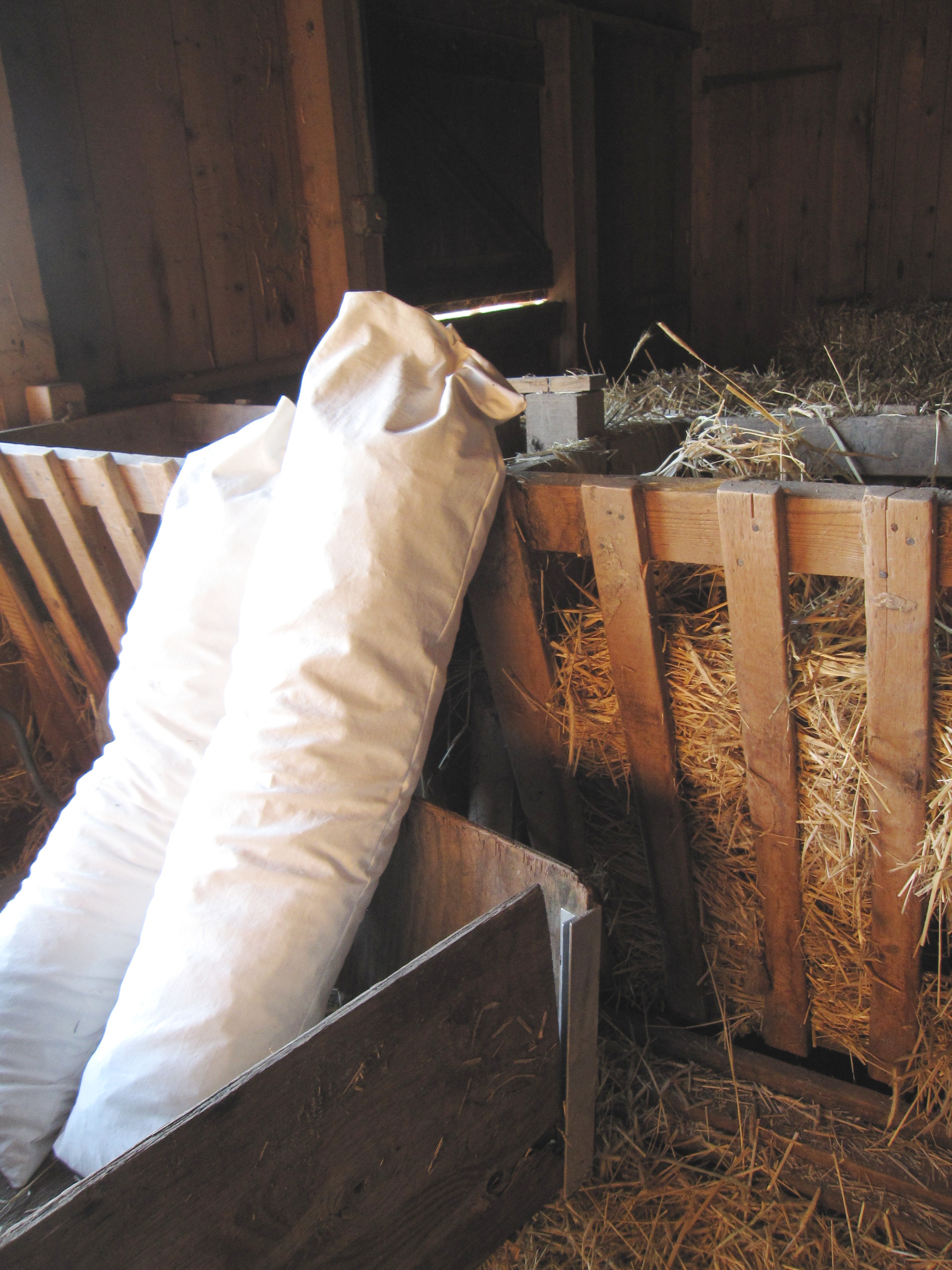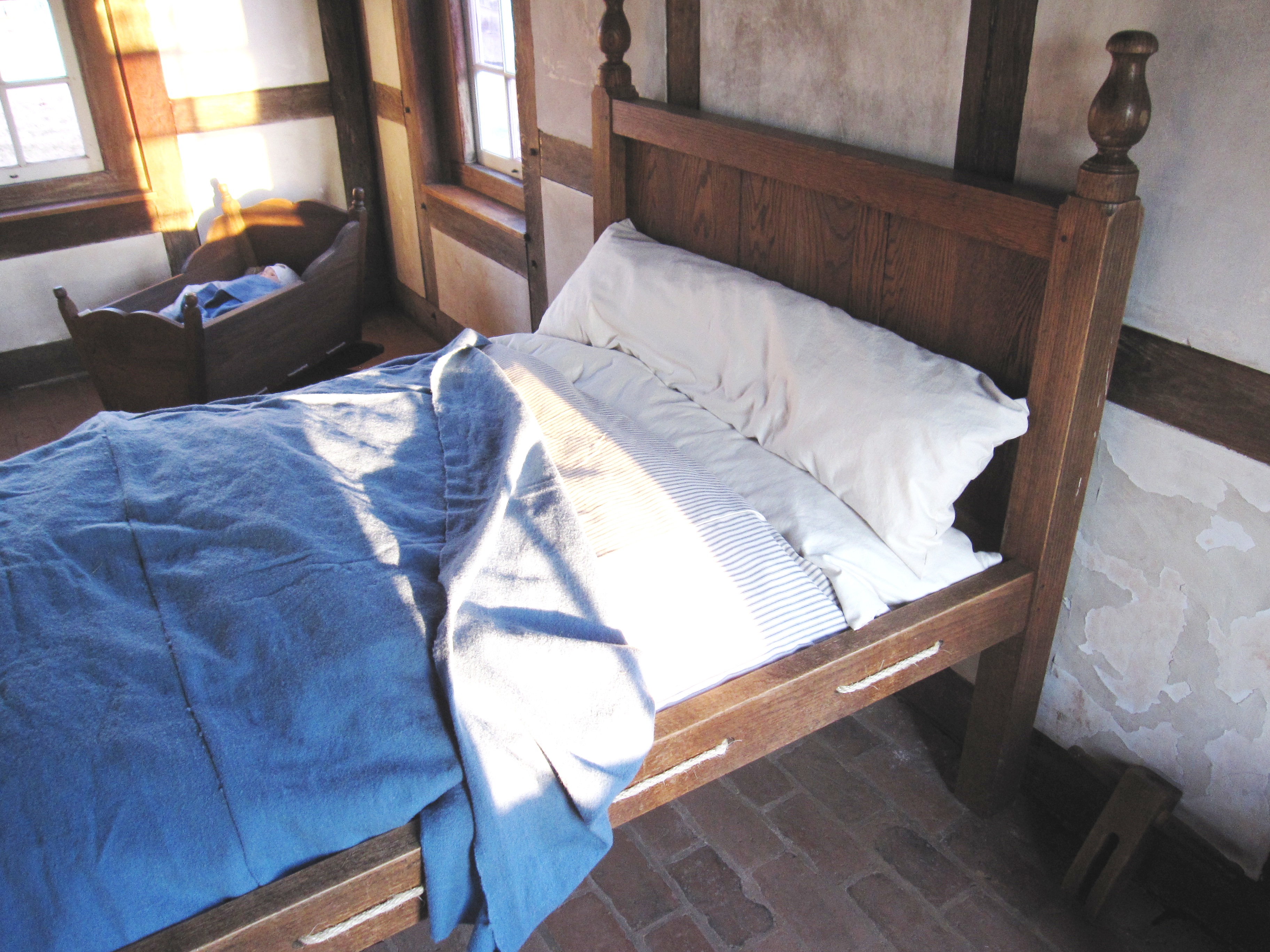

Raised beds would have been a luxury for many families, reserved for the master and mistress of the house. Children, servants, and slaves would have slept
We started with the roped frame, creating an interlocking bottom similar to basket weaving. The tool pictured here is called a Key, and is used to pull the ropes tight. Stretching the ropes as tight as possible, then tying them off would keep a firm foundation for the mattress. Still, ropes stretch with use, and would need occasional tightening to ensure the occupants don’t fall through in the middle of the night!
Once the bed is tightly roped, it’s time to add a mattress. Whenever possible, colonists would use feather down to stuff their bed. But those without the money or means could always use straw. A sturdy, tightly woven linen ticking (cotton would become more accessible and affordable later in the 18th Century) made a great casing for the straw and prevented any irritating stalks from poking through. Just like today’s pillows, they were sewn on three sides, flipped inside-out and stuffed fully, then sewn closed. Over time the straw would break down, so the mattress could be reopened and emptied, then stuffed with new straw.
To see an example of how to stuff a 17th-century mattress, check out this clip of the BBC series Tales of the Green Valley, which documents a year in the life of a 17th-century farm:http://www.dailymotion.com/video/xqpvax_e8-tales-from-the-green-valley_lifestyle&start=815 . This is an amazing series which I wish was available to purchase in the US. However, all the episodes are available on YouTube and I highly encourage you to watch – once I started, I couldn’t stop.
In addition to the mattress, well-stuffed pillows and bed covers are also important. Many people preferred sleeping propped-up, which explains why some beds may seem short to modern eyes (there was not a big difference in height, contrary to popular myth). Depending on the weather, you might have many layers of sheets and blankets piled on top. We have one light blanket of a wonderfully scratchy blue wool, but others could certainly be added.
We are so pleased with the way our 17th-century bed turned out – please check out the finished product below! Continue reading “Exploring the Artifacts: Take Your Mattress and Stuff It!”


